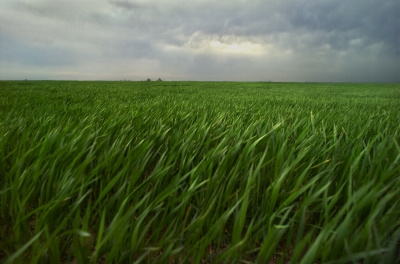Next round of deadlines for small campaigns coming up; five recently approved campaigns span from Ascension Island to Mount Bachelor
Not every science campaign requires a full deployment of ARM Climate Research Facility equipment; important work can be done with just an instrument or two, or in conjunction with a larger operation. These projects fall under the category of ARM’s small campaigns. Costing less than $300K, these campaigns give researchers access to ARM’s equipment to perform focused, specific studies. Following the new review deadlines, the next round of proposals are due:
- Level 1 (<$25K): August 22
- Level 2 ($25K-$100K): July 4
- Level 3 ($100K-$300K): December 12.
Five small campaigns were recently approved. They range from calibrating image algorithms with colored tarps to measuring black carbon from a mountaintop.

Land-Atmosphere Feedback Experiment
The Land-Atmosphere Feedback Experiment (LAFE; pronounced “la-fey”) at the Southern Great Plains (SGP) site will be looking at the relation between ground vegetation and atmospheric properties. By monitoring areas with varying vegetation—for example, wheat fields compared to bare soil—LAFE will learn more about land-surface-atmosphere interactions and their role in both large-scale systems and small-scale local conditions. In addition to the current suite of instrumentation at SGP, LAFE will use several additional remote sensing systems from the National Oceanic and Atmospheric Administration, University of Hohenheim, University of Oklahoma, and University of Wisconsin.
Principal Investigator: Volker Wulfmeyer, University of Hohenheim
Co-Investigator: David Turner, National Oceanic and Atmospheric Administration
LASIC: Ascension Island Initiative (ASCII)
The Layered Atlantic Smoke Interactions with Clouds (LASIC); Ascension Island Initiative (ASCII) will find out how smoke particles effect the size of cloud droplets—specifically, how smoke from biomass burning during the dry season of the African monsoon effects clouds in the southeastern Atlantic Ocean. With a depolarization ultraviolet lidar deployment to Ascension Island, ASCII will test a procedure that focuses on only two variables, allowing for the use of a statistical method called optimal-estimation inversion. As a component of LASIC, ASCII will be run in conjunction with three other studies to gain a broader context of aerosol-cloud interactions.
Principal Investigator: Martin de Graaf, Royal Netherlands Meteorological Institute
Co-Investigator: Karolina Sarna, Delft University of Technology
HI-SCALE: National Geospatial-Intelligence Agency Calibration Target Placements
Could atmospheric models be used to improve simulations of image collection? The Holistic Interactions of Shallow Clouds, Aerosols, and Land-Ecosystems (HI-SCALE); National Geospatial-Intelligence Agency Calibration Target Placements campaign aims to find out by testing image collection algorithms against a variety of calibration objects, from patterned tarps to camp stoves. These algorithms are used to account for atmospheric effects on images, and by running the calibration test during the HI-SCALE campaign, researchers will receive important real-world feedback.
Principal Investigator: Andrew Kalukin, National Geospatial-Intelligence Agency
Co-Investigator: Satoshi Endo, Brookhaven National Laboratory

Black Carbon at the Mount Bachelor Observatory
To find out more about black carbon (BC), the Black Carbon at the Mount Bachelor Observatory campaign will be using one of ARM’s Single Particle Soot Photometer (SP2) instruments at an elevation of 2,764 meters above sea level. Black carbon is a million times more effective than carbon dioxide at absorbing solar energy, making it a significant climate forcing agent. However, few BC studies have been done at remote sites or high elevations. This campaign will provide observations about BC in the free troposphere, a layer of the atmosphere high enough to receive long-range natural and anthropogenic pollution.
Principal Investigator: Dan Jaffe, University of Washington
Co-Investigator: Arthur Sedlacek, Brookhaven National Laboratory
MARCUS: Ice Nucleating Particle Measurements
Ice nucleating particles (INPs) play an important role in clouds and overall climate, but not all INPs are the same. The Measurement of Aerosols, Radiation and Clouds over the Southern Oceans (MARCUS): Ice Nucleating Particle Measurements campaign will study INPs over the open ocean, which are likely from biological processes in sea spray as opposed to dust or other continental sources. Using the samples collected during MARCUS, this campaign will determine the temperature spectrum of these INPs and perform a range of analyses including thermal, chemical, and genetic. These observations will add to other studies on aerosols and ocean clouds, and offer improved data for modeling.
Principal Investigator: Paul DeMott, Colorado State University
Co-Investigators: Thomas Hill, Colorado State University; Greg McFarquhar, University of Illinois at Urbana-Champaign
# # #
The ARM Climate Research Facility is a national scientific user facility funded through the U.S. Department of Energy’s Office of Science. The ARM Facility is operated by nine Department of Energy national laboratories.

